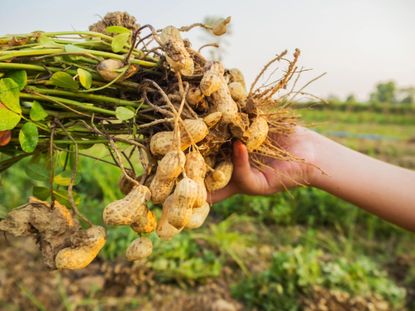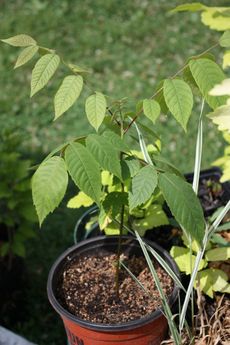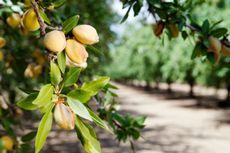Types Of Nuts In Gardens – Information On Seed Vs. Nut Vs. Legume


Confused about the difference between nuts and seeds? How about peanuts, are they nuts? It sounds like they are but, surprise, they aren’t. You would think if the word nut was in the common name, it would be a nut, right? Read on to clarify the difference between nuts and seeds.
Nuts or Seeds?
In order to demystify the difference between nuts and seeds, we need a working definition. Here’s why it gets confusing. A nut is a one-celled, one-seeded dry fruit with a hard shell (pericarp). So, we just mentioned it has a seed, so why isn’t it a seed? Well, for one thing, nuts tend to cling to their shells and only a nutcracker or mechanical equipment shall separate the two. Also, the seeds are the propagative part of the plant and are eaten along with the fruit. The nut may have one seed or two, and these are the embryonic part of the plant. Seeds, on the other hand, are the small plant enclosed in the seed coat, which is stored food to nourish the plant as it grows. Some seeds need their exterior husk removed before eating and others, such as sesame and poppy seeds, do not. Nuts are rife with protein, vitamins, minerals, and fat while seeds are rich in protein, vitamin B, minerals, fat, and dietary fiber. Now that we’re getting a grip on whether something is a nut or seed, just to add to the confusion, we then have something called a drupe. Drupes are often lumped in with nuts. A drupe is a fruit that is pulpy on the interior and encased in a hard shell that contains a seed. Peaches and plums are drupes, and their interior seed is discarded while the fleshy pulp is eaten. In some cases, however, the seed within the fruit, what is often referred to as a nut, is eaten. Examples of these include almonds, coconuts, pecans, and walnut.
Type of Nuts
So which nuts are actually nuts? As mentioned, sometimes drupes are referred to as types of nuts. Botanically speaking, however, acorns, chestnuts, and hazelnuts/filberts are true nuts. What about Brazil nuts, surely, they are nuts? Nope, not a nut. It’s a seed. How about the aforementioned peanut? Well, it’s actually a legume. What about a pine nut? You guessed it, it’s a seed.
Seed vs. Nut vs. Legume
What’s the difference between seed vs. nut vs. legume then? While peanuts (groundnuts) are similar in taste and look like nuts, not to mention the “nut” in their name, they are actually legumes. Legumes come in a pod (peanut shell) containing multiple fruit. The fruit splits when they are ready to harvest. Nuts have only one fruit inside the shell. Peas, carob, and all the bean varieties are legumes. To summarize:
- Nuts have a hard outer shell that contains a dry fruit and one or two seeds. The shell does not separate when the fruit is ready to eat but must be practically pried off.
- Seeds are embryonic plants with a built-in nutrient-rich seed coat. Some seeds need their outer husk removed prior to eating and others do not. If the outer husk is removed, it can usually be easily split by hand and removed.
- Drupes are fruits having a hard interior seed that may be discarded, as with rock fruit, or eaten, as with almonds and walnuts.
- Legumes have pods (shells, if you will) that contain multiple fruit, like pea pods or peanuts.
That said, culinary nuts, seeds, and drupes (not to mention peanuts), often cross lines, which is why it gets so darn confusing.
Gardening tips, videos, info and more delivered right to your inbox!
Sign up for the Gardening Know How newsletter today and receive a free download of our most popular eBook "How to Grow Delicious Tomatoes."

Amy Grant has been gardening for 30 years and writing for 15. A professional chef and caterer, Amy's area of expertise is culinary gardening.
-
 Urban Composting Guide: How To Compost In The Middle Of The City
Urban Composting Guide: How To Compost In The Middle Of The CityUrban composting does not have to be daunting. You can compost in the city, and maybe even try some urban worm composting!
By Mary Ellen Ellis
-
 Shrub Diseases And Pests To Watch Out For
Shrub Diseases And Pests To Watch Out ForShrub diseases and pests can be challenging. Learn how to recognize and eradicate them before they can present a danger to your plants.
By Susan Albert
-
 Common Nut Tree Diseases – What Diseases Affect Nut Trees
Common Nut Tree Diseases – What Diseases Affect Nut TreesGrowing your own nuts can be a rewarding experience, but it's important to know what to watch for as your young trees mature into nut-bearing adults. This article will cover some common nut tree diseases and how to manage them if they appear.
By Kristi Waterworth
-
 What Are Nut Tree Pests: Learn About Bugs That Affect Nut Trees
What Are Nut Tree Pests: Learn About Bugs That Affect Nut TreesGrowing nuts can be a fun experience, but like any other fruiting plant, it's important to know what can go wrong and be prepared. This article will discuss the common pests of nut trees and ideas for dealing with them if it's your turn to have to exterminate tree bugs.
By Kristi Waterworth
-
 Nut Trees In Containers: How To Grow A Nut Tree In A Pot
Nut Trees In Containers: How To Grow A Nut Tree In A PotWhile container gardening generally involves small crops or flowers, there are dwarf fruit trees on the market suited for growing in containers. What about nut trees? Can you grow nut trees in pots? Click on this article learn more.
By Amy Grant
-
 Nut Tree Fertilizer: When And How To Fertilize Nut Trees
Nut Tree Fertilizer: When And How To Fertilize Nut TreesNut trees, like fruit trees, produce better if they are fed. The process of fertilizing nut trees begins long before you have the joy of eating your own nuts. Do you want to know how to fertilize nut trees? Click here for all the information you will need.
By Teo Spengler